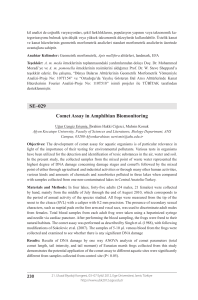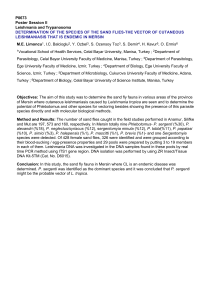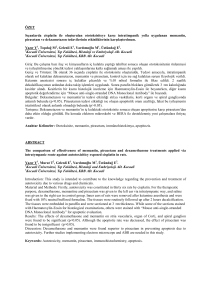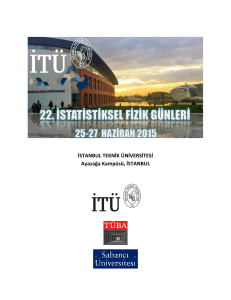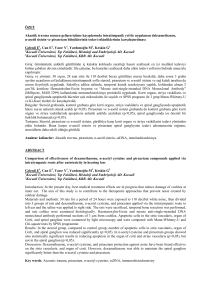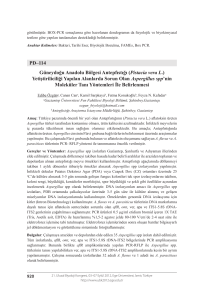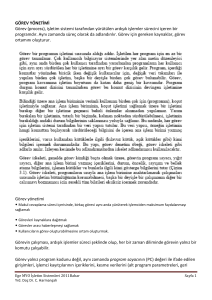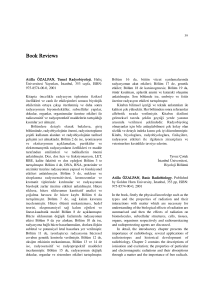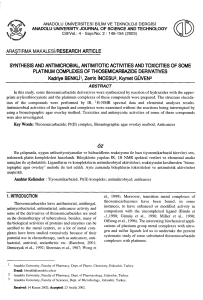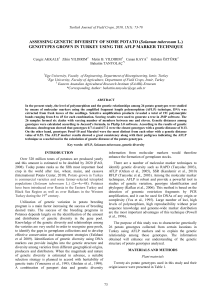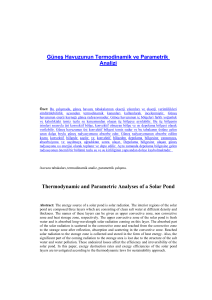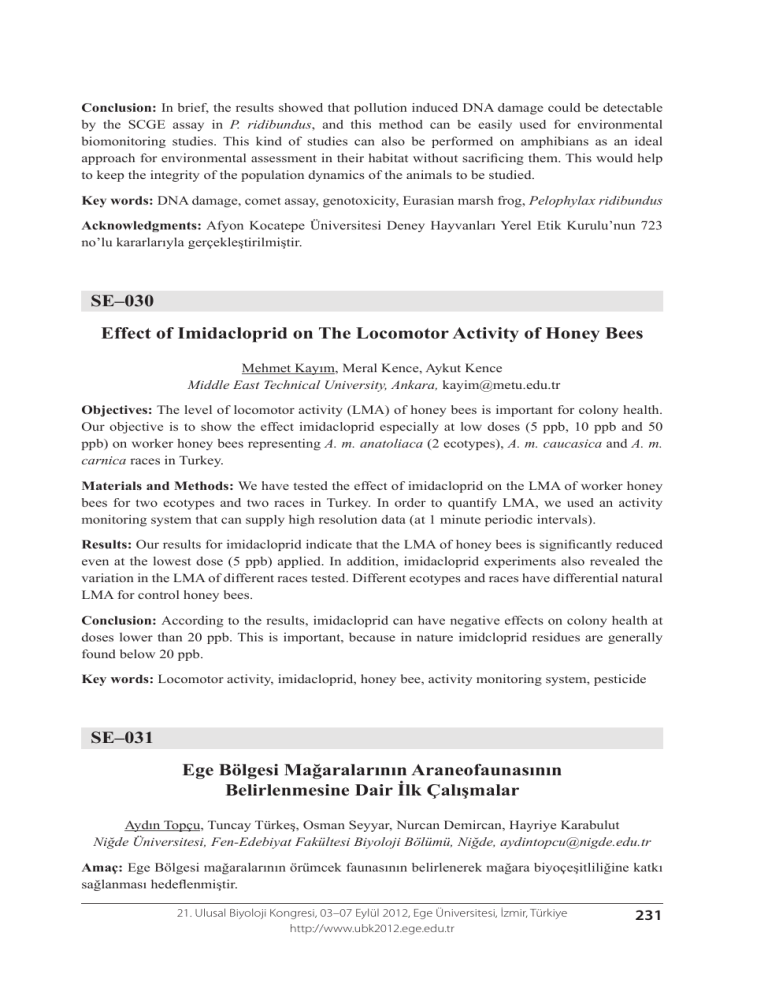
Conclusion: In brief, the results showed that pollution induced DNA damage could be detectable
by the SCGE assay in P. ridibundus, and this method can be easily used for environmental
biomonitoring studies. This kind of studies can also be performed on amphibians as an ideal
approach for environmental assessment in their habitat without sacrificing them. This would help
to keep the integrity of the population dynamics of the animals to be studied.
Key words: DNA damage, comet assay, genotoxicity, Eurasian marsh frog, Pelophylax ridibundus
Acknowledgments: Afyon Kocatepe Üniversitesi Deney Hayvanları Yerel Etik Kurulu’nun 723
no’lu kararlarıyla gerçekleştirilmiştir.
SE–030
Effect of Imidacloprid on The Locomotor Activity of Honey Bees
Mehmet Kayım, Meral Kence, Aykut Kence
Middle East Technical University, Ankara, [email protected]
Objectives: The level of locomotor activity (LMA) of honey bees is important for colony health.
Our objective is to show the effect imidacloprid especially at low doses (5 ppb, 10 ppb and 50
ppb) on worker honey bees representing A. m. anatoliaca (2 ecotypes), A. m. caucasica and A. m.
carnica races in Turkey.
Materials and Methods: We have tested the effect of imidacloprid on the LMA of worker honey
bees for two ecotypes and two races in Turkey. In order to quantify LMA, we used an activity
monitoring system that can supply high resolution data (at 1 minute periodic intervals).
Results: Our results for imidacloprid indicate that the LMA of honey bees is significantly reduced
even at the lowest dose (5 ppb) applied. In addition, imidacloprid experiments also revealed the
variation in the LMA of different races tested. Different ecotypes and races have differential natural
LMA for control honey bees.
Conclusion: According to the results, imidacloprid can have negative effects on colony health at
doses lower than 20 ppb. This is important, because in nature imidcloprid residues are generally
found below 20 ppb.
Key words: Locomotor activity, imidacloprid, honey bee, activity monitoring system, pesticide
SE–031
Ege Bölgesi Mağaralarının Araneofaunasının
Belirlenmesine Dair İlk Çalışmalar
Aydın Topçu, Tuncay Türkeş, Osman Seyyar, Nurcan Demircan, Hayriye Karabulut
Niğde Üniversitesi, Fen-Edebiyat Fakültesi Biyoloji Bölümü, Niğde, [email protected]
Amaç: Ege Bölgesi mağaralarının örümcek faunasının belirlenerek mağara biyoçeşitliliğine katkı
sağlanması hedeflenmiştir.
21. Ulusal Biyoloji Kongresi, 03–07 Eylül 2012, Ege Üniversitesi, İzmir, Türkiye
http://www.ubk2012.ege.edu.tr
231

